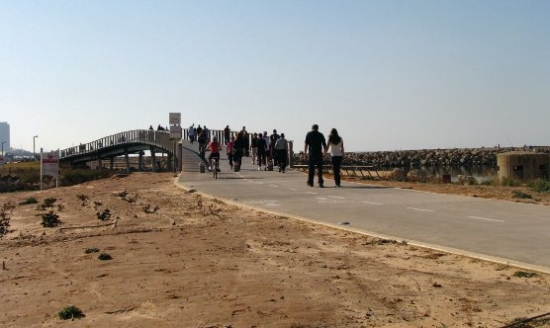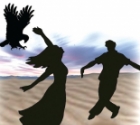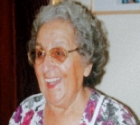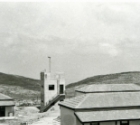
One of Tel Aviv’s Great Attractions
There is a chill in the December air as we leave the car and walk along a small path. The river next to us is almost twice its normal width, with a strongly flowing current. There is no wind, but under the darkening sky we can see waves crashing over the boardwalk, wetting unwary people walking near the wall and leaving large puddles on the wooden boards. The sea is a mass of wild waves, some of which fight their way fiercely up the river for about 100 meters before they are forced into submission by the sheer power of the mighty Yarkon.
Yes, we are in Tel Aviv – the northern part – and yes, there’s been a lot of rain recently. Tonight, however, the weather is clear, though chilly. To our left is a green, grassy stadium surrounded by seats under a modest corrugated roof. It was here, in 1932, that the first Maccabi Games was held; the year chosen to mark the 1,800th anniversary of the Bar Kochba revolt.
Those who drive into the port from the city side will see the large concrete statue of a worker (Hapoel ha’Ivri) bending under the weight of rods and bricks which he carries on his back.
The port area is a mixed suburb of buildings, interlaced by small streets, the main one of square cobblestones. Scores of shops, pubs, art and exhibition galleries, entertainment centers and restaurants – from Eastern European to Ethiopian, from kosher to crabs, from spaghetti bolognaise to bourekas – have gone up not far from the garages and large stores. The nearer you get to the boardwalk and the sea, the more places you find to eat and drink.
Large crowds of well-dressed people, mainly youngsters, step out of cars in the vast parking lots and walk along the small streets.
Another place to park is on the northern side of the river, along a winding road which ends near the tremendous chimney of the Reading Power Station. To get there, going west on Rokach Avenue, take a sharp right turn in front of the spectacular fire station building. This particular area is free and uncontrolled, and parking is a matter of “first come first served”.
We walk over the bridge which spans the river where it flows into the sea. Even at this late hour and the winter chill, we see joggers and cyclists. The port area connects with the 8 km promenade of Tel Aviv which, in the south, goes through the old Jaffa port and stretches almost to Bat Yam.
The northern part of the promenade cuts through the Tel Aviv port, continues across a second bridge recently built under the looming chimney of the power station, and ends up at the Tel Baruch beach in the far north of Tel Aviv. It’s a great walk.
Many of the restaurants and shops in the port are housed in high-ceilinged, hangar-like, buildings. One which particularly impressed me was Tsomet Sfarim, a book shop, which shares the same space as a well-known coffee house.
Inside the well-lit hangar, the walls are lined with shelves of books, with thousands more spread on smaller special counters throughout. And on the other side of the room is a large circular bar from which coffee and cake is served to customers reading at the many tables.
The roof is Swiss-style (there is no ceiling) and has wide ledges underneath it along two sides of the walls. Along these ledges are more tables and chairs, and windows which give a good view of the sea. The atmosphere is warm, cosy and relaxed.
Not far away is the former Tel Aviv harbor, which has a boat or two in it. Today, the place is lined with eateries. Here we see the boardwalk, a long and wide area made up of wooden boards. Part of the boardwalk is flat and part is built with rolling curves, enabling children with skateboards, cycles or pedal kiddy-cars to zoom down to the spacious safety of the flat boards. And often, , children are entertained by clowns and various performers.
This previously neglected area near the river and the sea nestles cheek by jowl with the old and the new electric power stations, and the ruins of the original station built by Pinhas Rutenberg in 1923, can still be seen.
A river and a sea and plenty of parking: someone at last saw the tourist potential lying dormant in this place, and over the last few years the Tel Aviv port has come in for a lot of development with, we read, more than 100 million shekels spent to turn it into a tourist attraction.
Anyone who hasn’t visited the old Tel Aviv port and its environs, not only at night, is missing out on one of the city’s great attractions.
 That Certain Smile
That Certain Smile Fay Shelter 1919-2012
Fay Shelter 1919-2012 Doreen (Devorah) Goldberg 1924 – 2012
Doreen (Devorah) Goldberg 1924 – 2012-1450935317.jpg) Spending a Week in Tel Aviv
Spending a Week in Tel Aviv  Ma'ale Hachamisha
Ma'ale Hachamisha-1450857993.jpg) Jazz in a Pearl Garden
Jazz in a Pearl Garden  Mike Porter
Mike Porter